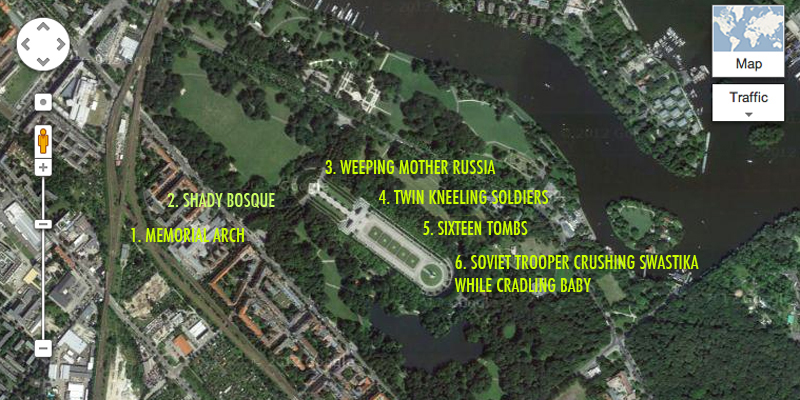
An aerial view of the Soviet War Memorial in Berlin’s Treptower Park lays out a procession of mourning and remembrance across a landscape and culture. With the Soviet occupiers beginning construction 10 months after the end of the war, the memorial spreads the granite ruins of the Third Reich Chancellory over territory the length of three football fields.
Since our summer trip to Berlin our posts have focused on comparisons between East Berlin and San Francisco’s Western Addition as a sort of Learning from Berlin. We have included thoughts on gentrification , on graffiti and now, lastly, on memorials. Before we tackle what a memorial in our home town might look like (and we welcome suggestions) we would like to provide online photo-documentation of East Berlin’s most colossal, yet less advertised, memorial. The Soviet War Memorial(Sowjetisches Ehrenmal) serves as a mass grave for more than 5,000 of the 80,000 Soviet soldiers, fallen in the Battle of Berlin, creating a superscale landscape of heroic death and monstrous bombast providing an apt synopsis of the physical horrors of WWII and the psychic horrors of Stalinist domination. More than DDR kitsch the monument marks the origins of the modern post-war memorial in Berlin establishing a pattern combining solemn remembrance, didactic reflections on horror and an historical critique presented through a landscape choreographed to achieve maximum emotional effect. While its monstrosity is tasteless and blatantly manipulative, one’s emotional response becomes thoughtful and complex, powerful and disturbed.
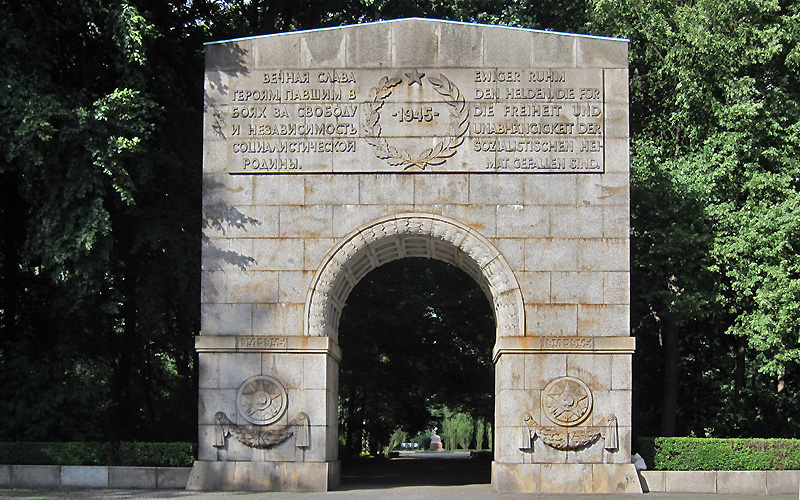
Along the sidewalk a memorial arch announces to the recently crushed Berlin population “Eternal rest for the heroes who have fallen for the freedom and sovereignty of the Soviet Homeland.” From the arch (1) a tall and deeply shaded tunnel of rustling leaves (2) leads to the distant silhouette of Mother Russia (3). Dwarfed by the distance, on approach her gigantism and weeping become evident.
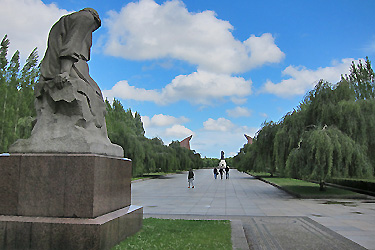
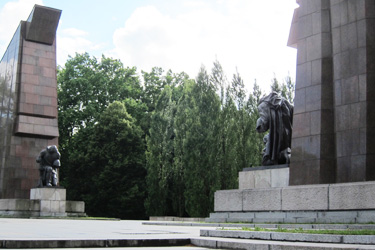
Turning toward the light at a processional dogleg, the sequence makes an emotional dogleg too, as the direction of her anquish becomes apparent. Two kneeling Soviet soldiers leaning heavily on their PPSH41 sub-machine guns (4) frame a gateway to a field of 16 raised tombs (5) holding 5000 Russian dead forming a parade ground of death and mourning. Each tomb is decorated with quotes from Stalin in Russian with German translation and with carved images depicting the liberation and total annihilation of Berlin by Soviet troops on the ground and the Allied bombs from the sky. (See the movie Woman of Berlin for a dramatic depiction of Berlin’s fall into vengeful Soviet hands.)
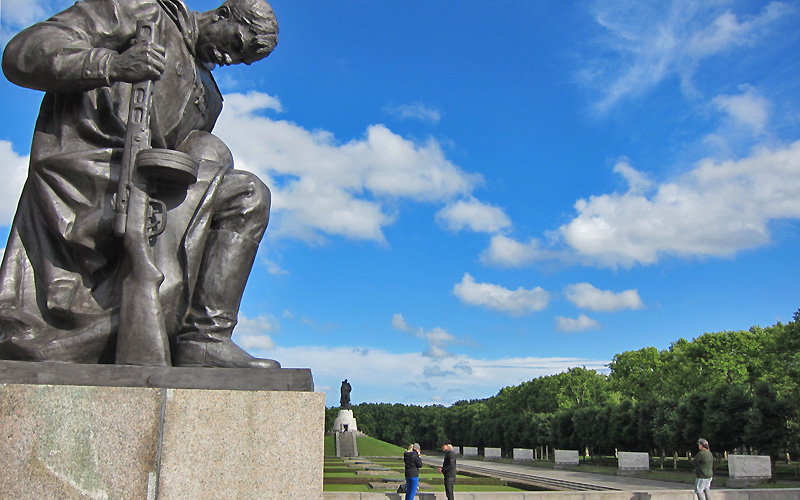
The long perspective of tombs climaxes on an apparent mass grave topped with a 75 foot high monument of a toddler hoisted by a mammoth Soviet soldier who in a damning act of liberation crushes a Swastika under his sword and boots (6). Surrounded by depictions of war’s atrocities, the proximity of fearful baby and blade are disquieting.

The Soviet memorial combines heroism, grief, justice and revenge, using emotional content as a didactic tool of propaganda to inflict psychic damage upon the defeated Berlin citizenry, heroizing their oppressors as liberators and rationalizing Berlin’s oppression as the weight of guilt.


Lacking subtlety the memorial confirms architecture as a tool to manipulate human emotion, the well-spring of memory. While vengeance and despair are negatives, reflections on loss and recognizing history’s toll can be liberating as emotional relief and can lead to a positive social re-commitment. In this way the crushing gigantism of the Soviet War Memorial can be compared to the unsettling dizziness created by the sloping walls and ground planes of architect Daniel Libeskind’s Jewish Museum in Berlin or the deep grief brought on by the dark descent of Maya Lin’s elegant Vietnam Memorial in Washington, DC, where architectural devices manipulate one’s sense of well being in the interest of national catharsis and historical revelation.
The memorial to the Red Army in Treptower Park provides the blueprint for Berliners’ modern mania for memorials as a means for an expiation of history’s guilt, providing an effective avenue from national shame and denial towards self-awareness, truth and reconciliation.
The Jewish Museum‘s Holocaust Tower and the Soviet Hero, both shown below, are similar in size.
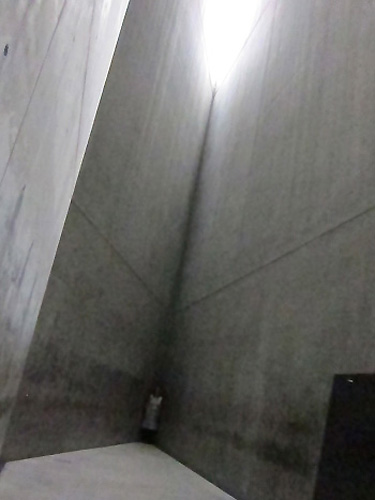
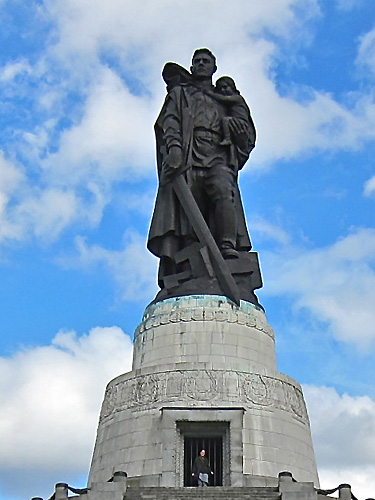
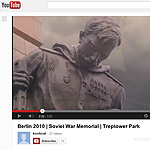

[…] War Memorial to the Red Army Dead (and Stalinist hit piece. See our previous post. […]
Great post, Jim. Looks like a powerful place. The landscape seems crucial, both defining the memorial space and discreetly hiding it within the city. That sequence from street to Mother Russia is perfect. Hard to argue with the sculpture. Entirely fitting that this memorial outlives the Soviet Union that built it. Now if they can just save the last bits of the Berlin Wall…
From Glendale,CA, Mark writes: “In our neighborhood, the memorial would be a modest California bungalow being crushed by enormous Corinthian columns.”